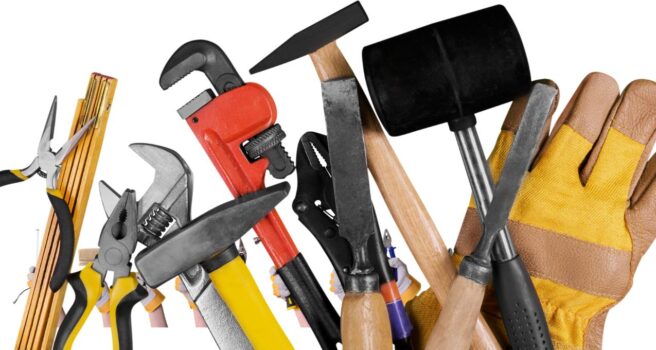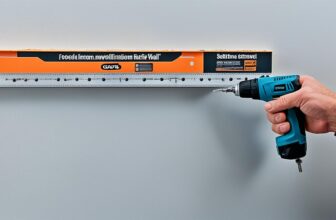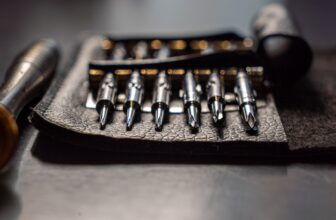Having a set of essential hand tools is crucial for any DIY enthusiast to be able to take on home improvement projects. Investing in durable, versatile, high-quality basic hand tools will make a difference in allowing you to successfully and efficiently complete repairs, installations, construction tasks, woodworking, automotive work, and various other jobs around the house.
Table of Contents
Hammers
Hammers are possibly the most often reached-for tools for the average homeowner. They come in a variety of styles, but having at least three types of hammers is recommended:
Claw hammer
The classic claw hammer with a curved claw on one end and a flat striking surface on the other is the go-to choice for driving and pulling nails. A 16 or 20-oz claw hammer with a fiberglass or hickory handle allows you to swing with force while avoiding excessive weight.
Disclaimer:
Our recommendations are based on extensive experience with and/or knowledge of these products, and we do so not because of the modest commissions we could earn but rather because we believe they are actually beneficial and useful. We are honored to be these tools' affiliates. We might receive commissions from Amazon, and other merchants when you buy something after clicking one of our links. Our affiliate policy is covered in more detail here. If you don't think these things will help you accomplish your goals, please don't spend any money on them.
Ball peen hammer
For shaping and smoothing metal, a ball peen hammer with a flat face on one end and a rounded peen on the other is extremely useful. They come in various ounce sizes, with 8 to 32 oz being common for home use.
Rubber mallet
When you need to deliver impact without damaging the surface, a rubber mallet is the perfect solution. They have replaceable rubber or plastic heads. Great for assembling furniture, adjusting machinery, and general light-duty tapping.
| Hammer Type | Key Features | Common Uses |
| Claw hammer | Curved claw, flat striking face | Driving and removing nails |
| Ball peen hammer | The flat face and ball-shaped peen | Shaping metal |
| Rubber mallet | Rubber or plastic head | Delicate impact tasks |
Screwdrivers
No toolbox is complete without a quality screwdriver set. At a minimum, you’ll need the two most common driver types:
Phillips’s head
The X-shaped Phillips screwdrivers fit crosshead screws. A #1 and #2 Phillips should cover typical screw sizes.
Flathead
Flat-bladed drivers work with slotted screw heads. We have a few sizes available, like 1/8″, 5/16″, and 3/8″ flat heads.
Ratcheting screwdriver
This specialized tool has a pivoting head allowing you to turn screws without removing and repositioning the driver. It can speed up projects involving many screws.
Screwdrivers come in many handle styles and shaft materials, but chrome vanadium alloy shafts offer strength without being overly heavy. For comfort, smooth cushion grip handles are ideal.
Adjustable Wrenches
Adjustable wrenches provide the convenience of being able to grip and turn a wide range of bolt and nut sizes without needing multiple fixed wrenches. Two must-have adjustable wrench sizes include:
12″ adjustable wrench
A medium to large 12″ adjustable wrench allows excellent leverage for loosening or tightening tough bolts and pipes up to 2″ in diameter. These are heavy-duty gripping tools.
6″ adjustable wrench
For reaching into tight spaces, a 6 to 8″ model adjustable wrench is extremely handy. The small size allows working in narrow openings.
Adjustable wrench jaws should have sharp, clean teeth to maximize grip and prevent rounding off bolt heads and nuts. Durable steel construction prevents flex and slippage under high torque.
This covers some of the most essential basic hand tools that every DIYer should own. Continue building your home toolbox by adding pliers, levels, measuring tapes, clamps, and other vital gear. Investing in quality tools will pay off for years down the road.
Pliers
Pliers are designed for gripping, bending, cutting, crimping, and manipulating a wide range of materials. Here are three types of pliers that handle a variety of needs:
Slip joint pliers
These adjustable pliers allow you to grip objects of various sizes. The slip joint makes it easy to slide the lower jaw in and out. Great for grabbing hold of nuts, bolts, pipes, or other items.
Needle nose pliers
Featuring longer, tapered jaws, these pliers can reach into very tight spaces. The pointed precision gripping tips are perfect for manipulating small objects, bending wire, grabbing nails, and more.
Locking pliers
Locking pliers like Vise-Grips are the answer when an extremely strong, pressing grip is needed. The jaws clamp tightly and won’t let go until you release the mechanism. Apply tons of force for demolition, automotive repairs, bending, and heavy-duty applications.
Top-quality pliers will have precisely machined head and joint components that won’t loosen over time. This maintains smooth adjustment and tight gripping strength. Choose drop-forged steel construction for durability.
Measuring and Marking Tools
Accurate measurements are crucial in any DIY project. Having a set of basic measuring and marking implements helps ensure precision fit and alignment.
Tape Measures
Tape measures are vital for taking linear measurements. Useful features include:
- Nylon-coated blades resist abrasion and UV light
- Reinforced hook holes for durability when catching edges
- High contrast large markings are easy to read
- Blade lock and finger stop prevent unwanted retraction
- Belt clip and wrist lanyard openings for portability
Top models include:
- Komelon Self Lock 25′ Power Tape Measure
- Milwaukee 48-22-5125 25′ Magnetic Tape Measure
- Stanley FatMax 35′ Hi-Vis Tape Measure
Squares
Squares ensure perpendicularity and right angles. Types include:
- Framing squares – Heavy duty 12″ blade with 24″ tongue
- Combination squares – Adjustable heads pair with rules
- Speed squares – Compact for quick angle checking
Quality squares come from Swanson and Empire.
Levels
Levels verify flat and plumb orientations. Options include:
- Torpedo levels – Compact curved vials
- Line levels – Align across surfaces
- I-beam levels – Robust aluminum construction
- Laser levels – Project crossing laser guidelines
The top brands are Stabila, Kapro, and Johnson.
Invest in durable measuring tools from trusted manufacturers to take the guesswork out of critical dimensions and alignments.
Rulers
Rulers provide incremental measurements for transferring dimensions. Look for:
- Machine-engraved markings won’t rub off
- 1/8″ and 1/16″ markings for fine precision
- Stainless steel resists corrosion
Top rulers come from Starrett and iGaging.
Protractors
Protractors measure and layout angles. Useful types include:
- Beam compasses – Adjustable arms for large circles
- Combination squares – Precisely set and transfer angles
- Digital protractors – Provide readouts for exact angles
Quality brands are Incra and Swanson.
Calipers
Calipers take precise inside, outside, depth, and step measurements. The two main types are:
- Dial calipers – Readouts display exact dimensions
- Vernier calipers – Require comparing scaled markings
Top-rated caliper sets are from iGaging and Mitutoyo.
Marking Tools
Marking implements transfer measurements. Go-to marking tools include:
- Pencils – Versatile and erasable
- Mechanical pencils – Fine lines without sharpening
- Markers – Bold lines stand out
- Scribes – Inscribe layout lines in materials
- Chalk lines – Temporary straight lines across surfaces
Quality marking tools will ensure accurate layouts and cut time after time. Invest in durable metal construction from trusted brands.
Straight Edges and Rules
Straight edges provide guides for marking long straight lines or checking flatness. Materials include:
- Metal rules – Stainless steel offers durability
- Wood rules – Lightweight yet rigid hardwood
- Drywall rules – Flexible plates conform over uneven areas
Top brands like Empire, Swanson, and Johnson deliver accuracy.
Feeler Gauges
Feeler gauges measure small gaps and clearances. Features include:
- Stainless steel gauges resist corrosion
- Measurements marked clearly on each blade
- The carrying case protects flexible blades
Quality feeler gauge sets come from ATD Tools and GearWrench.
Marking Gauge
Marking gauges scribe lines parallel to a workpiece edge. Locking mechanisms ensure consistent depth. Get smooth marking action with brands like WoodRiver.
Dividers and Trammels
Dividers have two sharp points for stepping off equal increments. Trammels have an adjustable beam for large curves. Useful for shipbuilding, metal fabrication, woodworking, and more.
Investing in a quality set of layout tools helps craftsmen transfer dimensions accurately while working efficiently.
In addition to the essential hammer, screwdriver, wrench, plier, and tape measure tools already covered, here are some other basic tools that no DIYer should be without:
Utility Knives
A simple utility knife is one of the most versatile tools for cutting, scraping, prying, and trimming jobs. Features to look for include:
- Retractable or fixed blades
- Quick blade replacement
- Rubberized grip handles
- Belt holster for convenient access
Have plenty of replacement blades on hand. For more heavy-duty materials, choose thicker reinforced blades.
LED Flashlights
When working in dim corners, dark rooms, or at night, a trusty flashlight is a must. LED flashlights offer incredibly bright illumination while running cool and efficient. Key features include:
- Durable aluminum bodies with shatterproof lenses
- IPX4 water-resistant seals
- Powerful LED bulbs putting out 300+ lumens
- Zoomable beams to adjust light dispersion
Choose from small pocket flashlights up to large, high-powered spotlights and work lights with stands. Every DIYer needs proper visibility for detailed work or illuminating larger areas.
Investing in well-made hand tools will give you the capabilities needed to take on a wide range of DIY projects and repairs around the home with professional quality results.
Chisels
Chisels are vital for detailed woodworking and fine carpentry work. Look for chrome vanadium steel blades that resist corrosion and hold a sharp edge. Popular types include:
- Paring chisels – For general purpose cutting, trimming, and smoothing work
- Firmer chisels – Sturdy blades for chopping and heavy material removal
- Mortise chisels – Narrow blades to cut rectangular holes for mortise and tenon joints
- Skew chisels – Angled cutting edge great for cleaning out acute angles
Top chisel brands and models include the Narex Richter 8-piece set with beveled edges and striking blue plastic handles. Many praise the Irwin Marples 10-piece chisel set with ultra-sharp hardened steel blades.
Clamps and Vises
Clamps and vises provide an extra “hand” to securely hold materials in position while you work. They come in a wide variety of types and sizes.
Spring Clamps
Spring clamps offer quick one-handed operation for light-duty tasks. Useful features include:
- Steel springs provide holding force up to 60 lbs
- Vinyl-coated tips prevent marring workpieces
- Sizes from 2″ to 12″ openings suit small to larger parts
Top spring clamp sets come from Bessey and Irwin.
Bar Clamps
Bar clamps grip oversized and irregularly shaped items thanks to adjustable heads. Useful features:
- Rapid action release lever for quick adjustments
- Throat depth accommodation from 2″ up to 60″
- Steel bars prevent flexing under high-pressure
Bessey and Jorgensen make top-performing bar clamps.
Bench Vises
Heavy-duty bench vises are mounted to workbenches for stable material holding. Look for:
- 45,000 PSI ductile iron construction
- Double lockdowns to prevent opening while torquing
- Anvil work surfaces for bending and forming tasks
Quality vise brands are Yost, Wilton, and Pony.
Investing in a variety of trusted clamp and vise models will make material securing for gluing, assembly, machining, and other jobs easy. Here are some additional details on other useful clamps and vises for DIY and woodworking projects:
Pipe Clamps
Pipe clamps utilize black iron pipes threaded between adjustable heads to create deep reach capacity. Features include:
- Spans ranging from 12″ up to 60″
- Anvil-type bases prevent marring workpieces
- Throat depth accommodation through head slides
Bessy and Jorgensen offer heavy-duty pipe clamps.
Hand Screw Clamps
Also known as woodworker vises, these versatile quick-action clamps excel at holding irregularly shaped workpieces thanks to angled jaws. Useful features:
- Large wing nut adjustments for quick tightening
- Steel or wooden jaws to prevent marring
- Up to 8″ jaw capacity and 30″ throat depth potential
Woodriver and Pony make trusted woodworker vises.
Locking Pliers
These self-locking plier-based clamps grab and hold strongly in situations where normal clamps can’t. Look for:
- Diamond textured teeth prevent slippage
- Rust-resistant chrome vanadium construction
- Sizes from 5 to 12 inches
The top brands are Irwin and Crescent.
This covers the most useful clamp and vise types to handle a wide range of DIY and workshop jobs. Invest in a selection of quality brands and take your projects to the next level.
Ladders
A quality ladder brings safe access when working at heights. Look for these features:
- Multi-position ladders – Convert to stairway, wall-mounted, and extension ladder configurations
- Load rating over 300 lbs
- Non-conductive fiberglass construction
- Padded steps for comfort
The Little Giant 22 ft Velocity Multi-Use ladder checks all the boxes and meets OSHA safety standards.
Axes
Carbon steel axe heads resist impact shock and won’t loosen from the handle over time. Useful styles include:
- Felling axe – Angled blade for tree chopping
- Splitting maul – Heavy wedge preys logs apart
- Hatchet – Compact and packable for camping
Top brands like Estwing, Husqvarna, and Fiskars rate well for durability. Protective leather axe sheaths are a must during storage and transport.
Extension Cords
These deliver power to tools located distances from outlets. Features include:
- 12-14 gauge wire for durability
- Multiple outlets with circuit breakers
- The flexible jacket won’t crack
- Outdoor-rated water resistance
The GoGreen Power GG-16103 heavy-duty extension cord handles rugged job site use.
Hand Saw
Essential for detailed woodcutting tasks. Types include:
Crosscut saw
Sharp teeth cut across the wood grain.
Rip saw
Aggressively angled teeth rip along the grain.
Coping saw
Fine curved cuts for trim and scrollwork
Well-reviewed models come from trusted brands like Dewalt, Irwin, and Stanley. Combining handsaws with miter boxes adds precision.
Investing in these essential specialty hand tools expands DIY capabilities for all experience levels. Rely on durable construction from reputable manufacturers.
Hand Tool Maintenance and Care
Properly caring for your hand tools is crucial to ensure they remain in good working order and provide years of reliable service. This involves regular cleaning, inspection, storage, sharpening, rust prevention, and organization best practices.
Cleaning and Storing Your DIY Tools
Be sure to wipe down tools after each use with a clean rag before storing them. Remove any grease, dirt, dust, or debris that could degrade the tool over time. Store tools in a dry, indoor location not exposed to moisture or elements, like a garage or basement. Keeping them in carrying cases or hung on marked hooks protects them from damage.
Top Tool Cleaning Kits:
- Dewalt DWHT75025 Tool Cleaning Kit
- WORKPRO All-Purpose Tool Cleaner Spray
- Custom Leathercraft 1175 Tool Cleaner
Sharpening Techniques for Hand Tools
Sharpening is vital for tools like chisels, hand planes, knives, and saws to maintain a keen edge. Use sharpening stones, diamond plates, or powered grinding wheels. Techniques like circular sharpening motions or running the bevel flat are common.
Best Sharpening Stones for DIY Tools:
- Norton Crystolon Combination Sharpening Stone
- Work Sharp Guided Sharpening System
- Smith’s TRI-6 Arkansas TRI-HONE Sharpening Stones
Rust Prevention and Treatment for Hand Tools
Rust damage can ruin a tool. Use preventative sprays and oils like:
- Boeshield T-9 Waterproof Lubrication
- 3-IN-ONE Multi-Purpose Oil
- WD-40 Specialist Corrosion Inhibitor Spray
If rust develops, remove it with abrasives and apply conversion coatings to inhibit future rust.
Organizing Your Toolbox: Best Practices
- Use toolbox organizers like removable bins, trays, and inserts to compartmentalize items
- Label organizers and shelf areas for quick identification
- Store similar items together – group all wrenches together, pliers together, etc.
- Heavier tools on the bottom, lighter items up top
- Most used tools are readily accessible
Toolbox Organizers:
- DEWALT ToughSystem Tool Box Organizer
- Stalwart 75-MJ5051B Tool Box Organizer
- Custom LeatherCraft 1539 Multi-Compartment Tool Carrier
Following these essential maintenance steps will keep DIY tools performing like new ones for an extended lifespan. Investing in organization and preventative care saves money over a continual replacement of damaged items.
Choosing the Right Hand-Tool for the Job
Having the proper hand tool for the task makes all the difference in the efficient, quality, and safe completion of DIY and professional jobs. But with the overwhelming variety of screwdrivers, wrenches, hammers, pliers, and more, how does one determine what tools to buy?
Comparing Hand Tools for Specific Tasks
Evaluate your particular needs. For example, are you driving screws or turning bolts? Cutting wood or prying materials? The tool material, size, grip style, and features should align with its intended purpose. Steel hammers can shape metal, while rubber mallets won’t damage delicate surfaces. Review tool types, goals, and brands to select the right fit.
Affordable vs. High-End Screwdriver Sets: What to Buy?
| Factor | Budget Screwdrivers | Premium Screwdrivers |
| Cost | Under $20 | $50+ |
| Steel Tip Hardness | Decent, may round off | Optimized hardness, durability |
| Handle Material | Basic plastic or rubber | Cushioned grips, ergonomic shapes |
| Number of Pieces | 20-30 common bits | 50+ bits, specialty bits included |
| Extras | Basic storage case | Ratcheting function, bit extension, case |
Verdict: Splurge on workhorse screwdrivers used constantly. Supplement with budget versions of rarely used niche bits.
DIY Tool Kits: Building Your First Set
Start with essentials like a claw hammer, Phillips/flat screwdrivers, adjustable wrench, utility knife, and tape measure. Expand into specialty tools like pliers, clamps, handsaws, socket sets, specialty drill bits, etc., as needs arise in projects. Quality over quantity, don’t overbuy!
Ergonomics in Hand Tool Selection
Choose tools offering thick, cushioned grips and textured handles with finger indents that enhance comfort, slip resistance, and torque control. Well-balanced tools reduce fatigue. Those with arthritis benefit greatly from ergonomic designs.
Investing in the right tools for your DIY and professional needs ensures efficiency in getting jobs done while also protecting the safety and final work quality.
Safety Tips for Using Hand Tools
When using hand tools, safety should always be the top priority. Taking proper precautions greatly reduces the risk of injuries and accidents on DIY and professional sites.
Personal Protective Equipment for DIY Projects
Wearing the right PPE gear is crucial when handling potentially dangerous tools:
- Safety goggles – Protect eyes from flying debris and dust. Dewalt DPG82-11C clear anti-fog goggles.
- Work gloves – Save hands from blisters, cuts, and pinches. Mechanix Wear M-Pact Coyote gloves.
- Ear muffs – Shield hearing from loud power tools. 3M Peltor X5A Over-the-Head Earmuffs.
- Dust masks – Filter out hazardous particles. 3M 8210Plus N95 Particulate Respirator.
Best Safety Gloves for Tool Handling
Quality gloves improve grip and protect hands:
- Cut-resistant gloves – Ansell HyFlex 11-818 Size 9 Gloves
- Anti-vibration gloves – IRONCLAD General Utility Work Glove
- Puncture-resistant gloves – Superior Glove Works Tuff Skin Gloves
Safe Practices When Using Sharp Tools
Exercise extreme caution handling sharp cutting implements:
- Cut away from your body
- Store safely in protective sheaths
- Ensure adequate clearance when swinging tools
- Firmly brace and secure workpieces
Electrical Safety for Hand Tools
Prevent shocks by following safe electrical practices:
- Use double-insulated tools like Milwaukee 2997-22 M18
- Regularly inspect cords for damage
- Use GFCI outlet adapters
- Never handle plugs with wet hands
Following basic safety protocols when using hand tools is essential to avoid severe laceration, impact, fall, electric shock, hearing loss, eye, or other injuries.
Sharpening Tools with Safety Guards
Many sharpening systems now come with protective guards:
- Work Sharp Guided Sharpening System has a see-through cover
- Tormek T-4 Water Cooled Sharpener encloses the stone
- Norton 4643 Sharpening Stone Reservoir catches water
Always ensure guards are in place before sharpening. Wear cut-resistant gloves when sharpening as added protection.
Preventing Repetitive Strain Injuries in DIY Activities
Extended use of vibrating or forceful tools can cause long-term damage:
- Use ergonomic grips and gloves to lessen vibration
- Take regular breaks to rest hands and wrists
- Avoid awkward postures that overextend joints
- Limit consecutive hours using high-torque tools
Ergonomic Tools to Reduce Strain
Ergonomic designs enhance comfort and reduce injury risks:
- Padded anti-vibration handles
- Contoured grips fitting the hand naturally
- Lighter weight materials to prevent fatigue
- Well-balanced for ease of control
Top brands making ergonomic tools include Metabo, Makita, Bosch, and Dewalt.
Proper training on tool use, inspecting equipment pre-use, wearing appropriate PPE, and following manufacturer safety guidelines are also imperative to promote hand tool safety. Protect yourself and your DIY investments by always making safety a priority.








